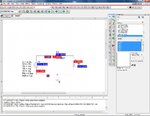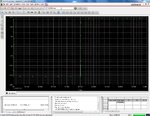goldsmith
Advanced Member level 6

- Joined
- Dec 14, 2010
- Messages
- 3,981
- Helped
- 741
- Reputation
- 1,486
- Reaction score
- 726
- Trophy points
- 1,413
- Location
- Tehran - IRAN
- Activity points
- 24,546
Follow along with the video below to see how to install our site as a web app on your home screen.
Note: This feature may not be available in some browsers.




















How would I know sir? Even I don't know what is the difference between these two diodes. We have never learned when to use which diode. So really it is approximately impossible for me to say about the difference between two.Now can you say why the results are not the same ? can you predict why 1n4148 could rectify that wave but 1n4007 couldn't ?
I considered much my attention on this question but I remain unable to get answer to this question. Still I am blank; your were right.By the way , a diode is like a switch too . if you give it the 0.6 volts ( for silicon ) it will be on . but the reason , was not that ! ( that AC voltage after the diode )
Yes sir, I have seen some cycles.By the way , why you just want to see one cycle ? it is not good ! you should be able to see some cycles

